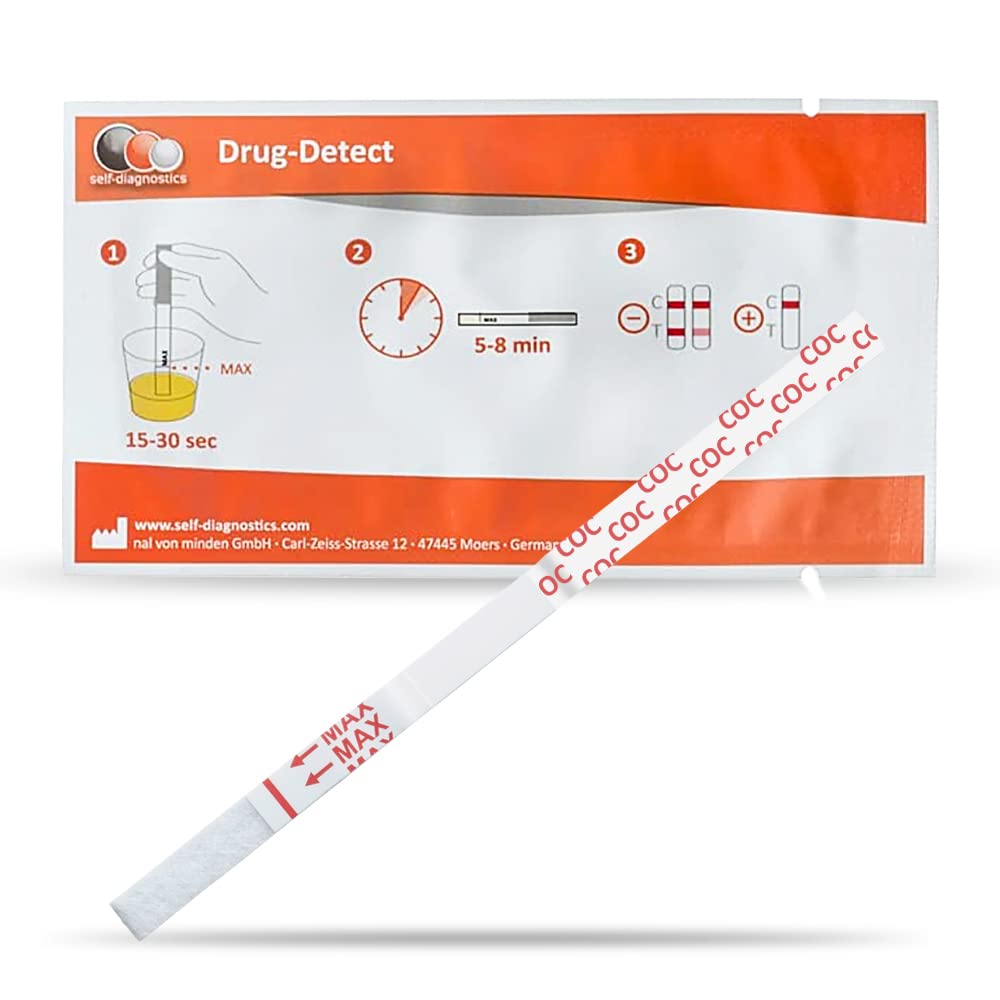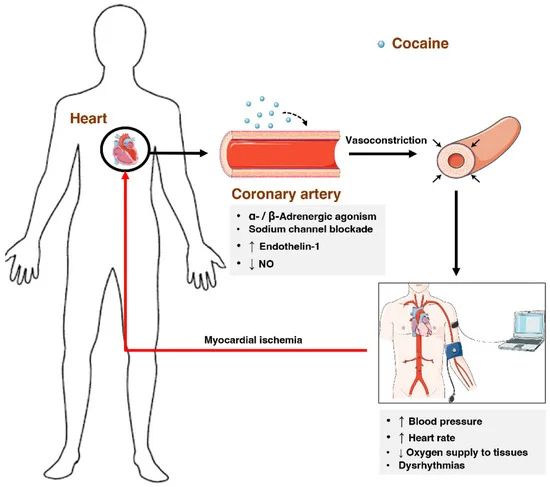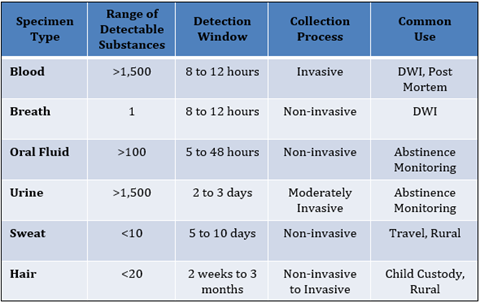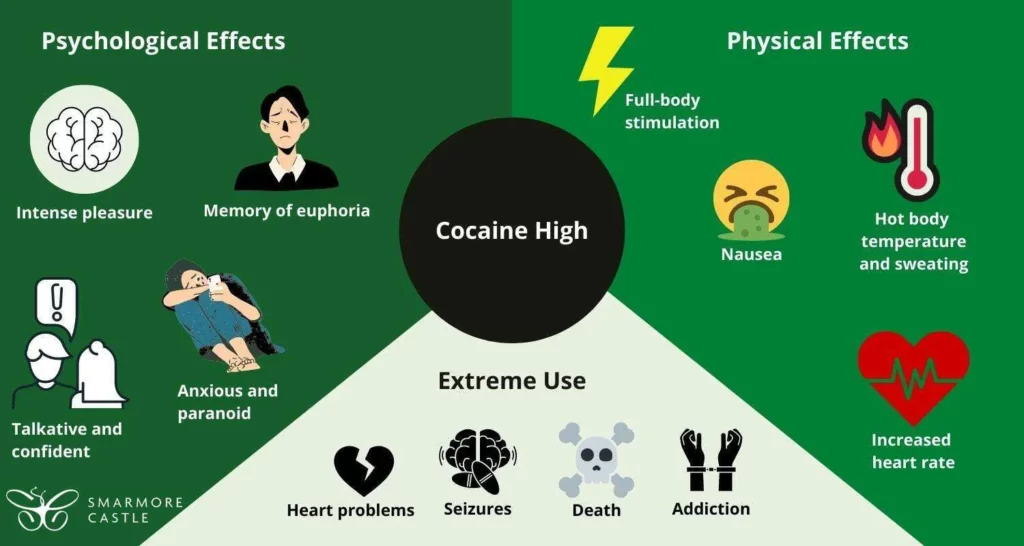Cocaine can be detected in urine for approximately 3 to 5 days after a single use, and up to 14 days for frequent users. Factors like metabolism and health can influence how long cocaine stays in urine. This article explores these detection windows and the variables affecting them.
Key Takeaways
- Cocaine is primarily detected in urine through its metabolite, benzoylecgonine, with detection windows ranging from 3-14 days based on usage frequency and individual factors.
- Factors such as metabolism, hydration, and liver function significantly influence how long cocaine and its metabolites remain detectable in the body.
- Comprehensive treatment for cocaine addiction involves detox programs, therapy options, and ongoing support through aftercare and support groups to promote long-term recovery.
Cocaine Detection in Urine

Urine testing is the most common approach for identifying cocaine consumption and its by-products. Drug tests focus on the detection of benzoylecgonine, which is a principal metabolite of cocaine. A concentration of 300 micrograms per liter in urine typically indicates a positive test result.
These drug tests play a crucial role in recognizing early signs of cocaine abuse, helping to stop its progression towards addiction while enabling prompt intervention and treatment options.
Typical Detection Window for Cocaine in Urine
The duration for which cocaine remains detectable in urine can greatly differ depending on how often it is used. After a single incident of use, the presence of cocaine can typically be identified in urine between 3 to 5 days, presenting a relatively brief detection period. With habitual usage, this timeframe may expand considerably. For those who engage in repeated cocaine consumption, detection periods could extend from 5 to as many as 14 days and are influenced by both individual metabolic rates and the amount consumed.
Urine assessments are particularly adept at discovering traces of cocaine usage for durations that might reach two weeks in certain situations. These tests prove indispensable when determining occasional or regular use among individuals consuming cocaine. It’s important to note that variables such as overall health and metabolism rate may affect these detection windows.
Factors Affecting Detection Times in Urine
The length of time cocaine remains detectable is greatly affected by a person’s individual metabolism rate. Those with a faster metabolic process are able to clear cocaine from their systems more rapidly, whereas habitual users may find that detection periods increase because metabolites build up in the body.
Additional variables including general health status, usage patterns, and hydration can also impact how long cocaine is detectable. Proper hydration facilitates the more effective elimination of cocaine, while insufficient fluid intake can decelerate metabolic function and thus extend the period of detection.
In essence, these diverse elements all play a role in determining the variability observed in how long urine tests can identify traces of cocaine.
How Cocaine is Metabolized in the Body

The bodily process of metabolizing cocaine entails breaking down and expelling the substance. This task is primarily undertaken by the liver, which transforms cocaine into different metabolites such as ecgonine methyl ester and benzoylecgonine.
Comprehending this metabolic mechanism is essential because it affects how long cocaine and its resulting substances can be detected in the body, taking into account various factors that influence cocaine metabolism.
Role of the Liver in Cocaine Metabolism
Cocaine is metabolized by the liver into various active and inactive compounds, which are then expelled from the body. During urine tests, benzoylecgonine—a primary metabolite of cocaine that tends to be present in greater quantities than cocaine itself—is what’s typically detected. Metabolic processes can be altered when alcohol is consumed alongside cocaine, which may sometimes make drug test outcomes less straightforward.
The consumption of cocaine can have serious implications for liver health. It has been associated with heightened levels of liver enzymes, tissue necrosis within the liver, and even severe cases of acute hepatic failure. The degree to which the liver is affected hinges on several factors including how much and how often cocaine is used as well as individual differences like overall health status and mode of consumption—snorting versus injection or inhalation—and these must all be considered both in interpreting results from a drug test and gauging the full impact that cocaine usage may have on an individual’s physiology.
Impact of Hydration and Kidney Function on Cocaine Elimination
The levels of hydration and the efficiency of kidney functions play crucial roles in how long cocaine remains in your body. A reduction in metabolic rate due to dehydration can prolong the period that cocaine is detectable within your system. On the other hand, maintaining proper hydration can assist in accelerating the expulsion process, aiding your body in more promptly removing cocaine and its byproducts.
Cocaine undergoes metabolism by the liver into several derivatives, which are subsequently cleared out through renal processing. The success rate of this detoxification varies from person to person depending on their health status and individual metabolic speed.
When alcohol is consumed alongside cocaine, it leads to the production of cocaethylene – a compound that lingers longer than cocaine itself before being eliminated from our systems. Thus affecting overall detection windows for drug testing purposes.
Different Types of Drug Tests for Cocaine

Numerous testing methods are utilized for identifying cocaine consumption, each presenting unique benefits and constraints. The primary techniques encompass urine, blood, saliva, and hair examinations. They provide distinct timeframes for detection as well as varying degrees of precision.
Comprehending these various approaches to drug tests is crucial when analyzing outcomes and making educated choices regarding health care and interventions related to cocaine use.
Urine Drug Testing
Urine tests are widely employed as the go-to method for identifying cocaine consumption, offering reliable outcomes without being invasive. These urine examinations focus on detecting benzoylecgonine—a metabolite that typically appears in greater levels than cocaine itself—facilitating its recognition. These tests may sometimes produce false negatives if substances capable of concealing the drug’s traces are present.
Despite the infrequency of false positives in testing for cocaine, medications with lidocaine could provoke inaccurate test readings. To guarantee precise interpretation of drug test findings and maintain the integrity of urine tests, it is crucial to be cognizant of such factors that can affect results.
Blood Tests
Another approach to identify cocaine consumption is through blood tests, which are highly accurate and have a brief detection timeframe. After intake, cocaine can be traced in the bloodstream within minutes and Continues to be traceable for up to 24 hours.
Despite their accuracy, blood tests are not as frequently used as urine tests because they require an invasive procedure and tend to take longer for results to become available.
Saliva Tests
Saliva tests offer a non-invasive and swift approach for detecting cocaine use, with results typically ready within 20-30 minutes following the collection of the sample. This makes it an expedient choice. The time frame in which cocaine can be detected in saliva is quite brief, typically spanning only up to 1-2 days post-use.
Even with this short detection window, one of the benefits of saliva tests is their capacity to deliver prompt results.
Hair Testing
Analyzing hair samples to identify the presence of cocaine and its byproducts is a reliable technique for determining historical patterns of drug use. The potential to detect cocaine usage through segmented testing extends up to one year.
The extended detection window provided by hair testing makes it an invaluable instrument for uncovering prolonged patterns of substance consumption.
Common Misconceptions About Cocaine Detection
Incorrect assumptions regarding cocaine detection can result in false impressions about how testing for the drug is carried out. It’s important to have precise knowledge to correct these misconceptions and make sure people are aware of both the processes and constraints involved in testing for cocaine.
There exist several methods used to test for cocaine, such as analyzing samples from urine, blood, saliva, and hair. Each method offers its own timeframe within which it can detect use (detection window) and possesses a distinct degree of precision.
False Positives in Cocaine Testing
It is uncommon for cocaine testing to yield false positives. Such instances can happen. The ingestion of alcohol and specific medications that include lidocaine might interfere with the test results, potentially resulting in a person erroneously testing positive.
Grasping these subtle distinctions is critical for precise interpretation of drug test results.
Influence of Other Substances on Cocaine Test Results
Local anesthetics such as lidocaine, procaine, and novocaine may inadvertently suggest cocaine use on drug tests because of their similar structures. When cocaine is mixed with alcohol, cocaethylene forms—this substance has a more extended half-life than cocaine itself, which not only lengthens its psychoactive impact, but also adds complexity to the interpretation of drug test results.
Cocaethylene’s higher toxicity compared to cocaine can significantly affect medical decision-making in emergency scenarios. The presence of this compound can reflect simultaneous consumption of both substances, information that could alter how drug test outcomes are read and influence subsequent patient care strategies.
Comprehending these chemical interactions is crucial for accurately evaluating incidents involving cocaine use and addressing the related health consequences effectively.
Health Risks and Long-Term Effects of Cocaine Use

Understanding the risks associated with cocaine use is essential to recognizing the serious consequences of cocaine addiction and underscores the importance of seeking treatment for this health-threatening condition, which carries both immediate and long-term dangers.
Immediate Health Risks of Cocaine Use
The consumption of cocaine precipitates immediate physiological reactions including a profound sense of joy, enhanced vitality, elevated vigilance, irritability, fidgetiness, and trepidation. The duration of these effects is brief. They can persist from mere minutes up to an hour based on the mode in which cocaine is administered. Intravenous use or inhalation induces a rapid sensation, whereas alternative approaches might result in more gradually unfolding impacts.
At its core, cocaine manipulates the dopamine neurotransmitter system within the brain to amplify sensations related to pleasure and reward. Nevertheless, despite such instantaneous outcomes leading to severe repercussions that pervade one’s mental well-being as well as their physical condition—not forgetting significant implications for both financial stability and personal relationships.
Long-Term Consequences of Chronic Cocaine Use
Continuous use of cocaine is linked to the development of various mental health issues, including heightened irritability, occurrences of panic attacks, experiences of paranoia, and manifestations of hallucinations. Extended exposure to this substance may result in lasting changes to brain function that can lead to dire impacts on an individual’s physical and psychological health.
The persistent use of cocaine highlights the imperative necessity for timely intervention and appropriate treatment measures as a means to avert these grave outcomes.
Recognizing Signs of Cocaine Addiction
Recognizing the signs of cocaine addiction is critical. Being aware enables prompt action and access to treatment. It’s important to be familiar with both behavioral and physical symptoms of cocaine abuse, as this knowledge can assist individuals and their families in determining the right time to reach out for assistance.
Behavioral Indicators of Cocaine Abuse
People who abuse cocaine often display abrupt surges in hyperactivity and may become aggressive. They are likely to experience fluctuations in mood, engage in dishonest behaviors related to their drug use, and disregard their personal duties—all indicative of a cocaine addiction.
Cocaine abuse can also be discerned through financial troubles as well as an incessant demand for cash.
Physical Symptoms of Cocaine Dependence
Physical indicators of addiction to cocaine often encompass:
- Regular episodes of nose bleeding
- Expanded pupils
- Swift loss of weight
- Profuse perspiration
- Elevated pulse rate
- Sleep deprivation
It is crucial for the detection and support of persons grappling with substance abuse that these physical signs are acknowledged, allowing them to pursue necessary treatment.
Seeking Treatment for Cocaine Addiction
It is essential to seek professional assistance when dealing with cocaine addiction, as overcoming it requires addressing both the physical and psychological facets of the dependency through effective treatment programs that provide extensive recovery support.
As one of the premier facilities, Paramount Recovery Centers in Massachusetts provides specialized attention for those battling with cocaine addiction, ensuring targeted care for individuals.
Detox Programs
Detoxification programs are designed to aid those struggling with cocaine addiction by preparing them for Treatment. These structured settings offer effective management of withdrawal symptoms, which minimizes discomfort and lowers the chance of returning to drug use. A successful detox eases these symptoms while laying the groundwork for a more in-depth approach to treating the addiction.
Within such a program, individuals receive medical oversight and assistance as they work towards safely removing cocaine from their body. This crucial early stage of rehabilitation is essential as it purges the substance from one’s system, thereby enabling them to start tackling the root issues behind their addictive behavior.
By focusing on both the physical and emotional dimensions of cocaine dependency, detox programs play an indispensable role in facilitating recovery.
Therapy and Counseling Options
Overcoming an addiction to cocaine typically necessitates a mix of therapeutic and medical strategies. Recovery from this dependency frequently incorporates Cognitive Behavioral Therapy (CBT) and Dialectical Behavior Therapy (DBT), which tackle the problematic thought processes and actions that contribute to drug use.
Effective therapeutic methods include Contingency Management, employing a system of incentives for maintaining sobriety, as well as Motivational Interviewing that boosts people’s willingness to alter their cocaine use habits. Essential assistance is provided through both individual and group therapy sessions, assisting individuals in creating coping mechanisms and reconstructing their existence free from the influence of cocaine.
Support Groups and Aftercare
Participation in support groups is essential for sustaining sobriety as they offer continuous backing and motivation. These groups foster a community atmosphere where individuals can relate to others’ experiences, which supports their path to recovery. The active involvement in aftercare programs helps preserve the progress made in recovery and reduces the likelihood of relapse.
Incorporating family members and friends into an individual’s treatment plan can significantly improve the level of support received, positively impacting recovery outcomes. Aftercare initiatives that encompass ongoing therapy, access to support gatherings, and additional resources are instrumental for those recovering from cocaine addiction by keeping them aligned with their goals while addressing any emerging hurdles during their journey toward long-term success.
Summary
It’s vital to comprehend the duration cocaine remains detectable in urine, the metabolic process of cocaine, and how various elements can affect detection periods to make educated choices about health care and treatment. Drug tests each have their own set of strengths and weaknesses. Being knowledgeable about widespread misunderstandings as well as the dangers posed by cocaine use is critical. Identifying addiction symptoms promptly and seeking expert help greatly enhances recovery prospects. Through proactive measures and leveraging existing support systems, people battling with cocaine addiction can reclaim control over their health for a more satisfying existence.
Frequently Asked Questions
How long does cocaine stay detectable in urine?
Cocaine can typically be detected in urine for about 3 to 5 days after a single use, and may remain detectable for up to 14 days in frequent users.
What factors influence the detection times of cocaine in urine?
Detection times of cocaine in urine are primarily influenced by individual metabolism, overall health, frequency of use, and hydration levels.
Understanding these factors can provide insight into how long cocaine may remain detectable.
Can other substances affect the results of a cocaine drug test?
Certainly, the presence of specific local anesthetics and alcohol may influence the outcomes of cocaine drug tests, leading to potential false positives or increased periods during which cocaine can be detected.
Taking into account these variables is critical when evaluating the results of such drug tests.
What are the immediate health risks of using cocaine?
Using cocaine presents immediate health risks such as intense euphoria, increased energy, heightened alertness, agitation, restlessness, and anxiety.
These effects can lead to severe physical and psychological complications.
What treatment options are available for cocaine addiction?
Cocaine addiction can be effectively treated through detox programs, therapy and counseling, along with support groups and aftercare programs.
It is essential to seek specialized care to address the complexities of this addiction.


